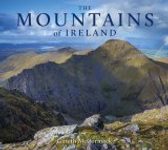![Ecological Processes and Cumulative Impacts Illustrated by Bottomland Hardwood Wetland Ecosystems Ecological Processes and Cumulative Impacts Illustrated by Bottomland Hardwood Wetland Ecosystems]()
Click to have a closer look
About this book
Contents
Customer reviews
Related titles
About this book
This timely new book is a "must-have" for anyone involved with wetland conservation, in particular bottomland hardwood forests, a habitat in which over 50% of our nation's inventory has been destroyed. Authored by recognized experts, the book thoroughly covers the ecological processes in bottomland hardwood forests and relates these processes to human activities. Chapters include original research into ecological processes, discuss impacts of human activities on flood plain ecosystems, and examine human perceptions of bottomland values and management strategies for ecosystem restoration and conservation. The book focuses on impact assessment and management, featuring local sites and ecosystems, as well as the processes in larger areas, such as watersheds and hydrological basins.
Contents
SECTION I: THE ECOLOGY OF BOTTOMLAND HARDWOOD FORESTS. Bottomland Hardwood Forests: Their Functions and Values (Jan R. Taylor, Milady A. Cardamone, and William J. Mitsch). Growth and Yield, Nutrient Content and Energetics of Southern Bottomland Hardwood Forests (Dennis Mengel and Russell Lea). Potential Nitrate Leaching Losses and Nitrogen Mineralization in an Atlantic Coastal Plain Watershed Following Disturbance: Preliminary Results (David A. Kovacic, Thomas G. Ciravolo, Kenneth W. McLeod, and Jack S. Erwin). Importance of Bottomland Forest Zones to Fishes and Fisheries: A Case History (Victor W. Lambou). Composition and Regeneration of a Disturbed River Floodplain Forest in South Carolina (Rebecca R. Sharitz, Rebecca L. Schneider, and Lyndon C. Lee). SECTION II: CUMULATIVE IMPACTS IN BOTTOMLAND HARDWOOD FOREST ECOSYSTEMS AND LANDSCAPES. Federal Statutes and Programs Relating to Cumulative Impacts in Wetlands (Thomas A. Muir, Charles Rhodes, and James G. Gosselink). Gauging th e Cumulative Effects of Developmental Activities on Complex Ecosystems (John Cairns, Jr.). Cumulative Impacts of Bottomland Hardwood Forest Conversion on Hydrology, Water Quality, and Terrestrial Wildlife (Larry D. Harris and James G. Gosselink). The Texas/Oklahoma Bottomland Hardwood Forest Protection Program (James A. Neal and Ernest S. Jemison). SECTION III: REPORTS OF WORKGROUPS IN THE EPA-SPONSORED BOTTOMLAND HARDWOOD FOREST WORKSHOPS. Bottomland Hardwood Forest Ecosystem Hydrology and the Influence of Human Activities: The Report of the Hydrology Workgroup (James G. Gosselink, B. Arville Touchet, Johannes Van Beek, and David B. Hamilton). The Use of Soil Classes to Delineate Transition Zones in Bottomland Hardwood Forests: The Report of the Soils Workgroup (B. Arville Touchet). The Effect of Developmental Activities on Water Quality Functions of Bottomland Hardwood Ecosystems: The Report of the Water Quality Workgroup (Michael L. Scott, Barbara A. Kleiss, William H. Patric k, and Charles A. Segelquist). Composition and Productivity in Bottomland Hardwood Forest Ecosystems: The Report of the Vegetation Workgroup (William H. Conner, R. Terry Huffman, and Wiley M. Kitchens). The Ecological Significance to Fisheries of Bottomland Hardwood System: Values, Detrimental Impacts, and Assessment: The Report of the Fisheries Workgroup (H. Dale Hall, and Victor W. Lambou). The Relationship of Human Activities to the Wildlife. Function of Bottomland Hardwood Forests: The Report of the Wildlife Workgroup (Steven W. Forsythe and James E. Roelle). Human Activities and Ecological Processes in Bottomland Hardwood Ecosystems: The Report of the Ecosystem Workgroup (James G. Gosselink, Mark M. Brinson, Lyndon C. Lee, and Gregor T. Auble). Analysis of Impacts of Site-Altering Activities on Bottomland Hardwood Forest Uses: The Report of the Cultural/Recreational/Economic Workgroup (Clyde F. Kiker). The Regulation and Management of Bottomland Hardwood Forest Wetlands: Im plication of the E
Customer Reviews



































